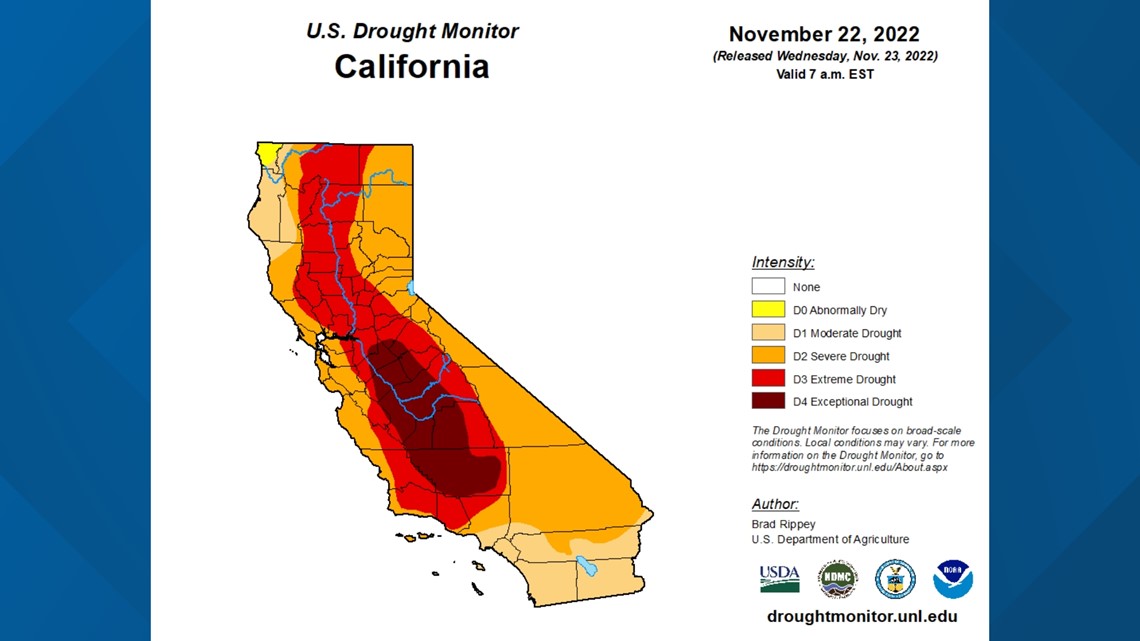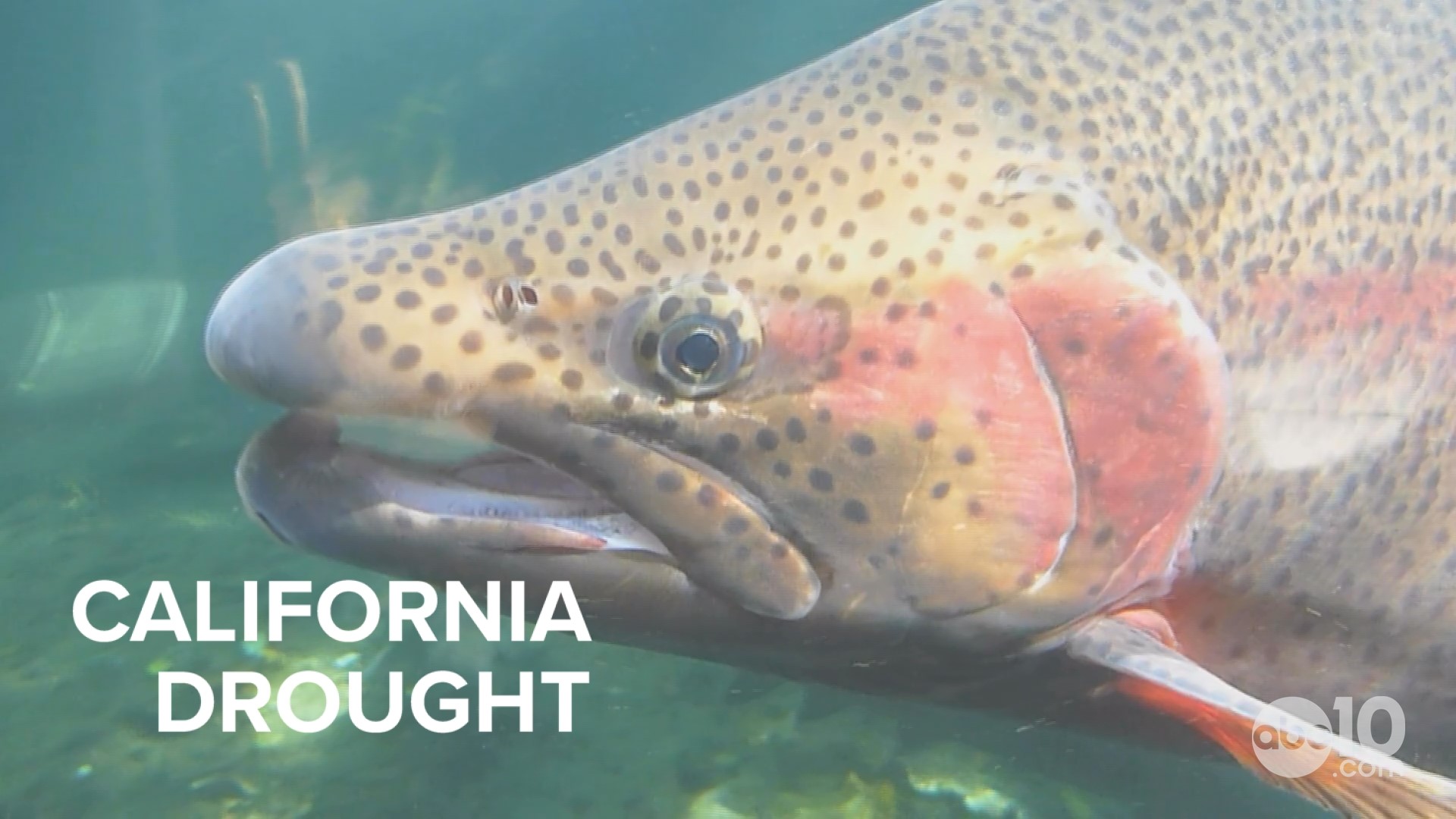SACRAMENTO, Calif. — A wet stretch of weather is on the way for Northern California, following a second half of November that has been dominated by mild, sunny conditions.
The wet weather will start overnight Wednesday and continue through nearly all of Thursday. Friday will be dry, but another storm system is right on its tail and will bring another round of precipitation to the region. All in all, by Monday next week the valley could see 2 inches of rain and the mountains could see anywhere from 3-5 feet.
This storm is helpful, of course, but no drought buster. The latest drought monitor is unchanged this week with nearly the entire San Joaquin Valley under exceptional drought conditions.


As the west has become developed and climate change is threatening an already limited water supply, native fish species are rapidly declining.
Trout Unlimited, the nation's largest cold water conservation organization, is doing everything they can to protect the water ways these species live in an increasingly dry climate.
"Our mission is to protect, reconnect and restore cold water fisheries," said Jessica Strickland, the inland trout program coordinator for California and trout for Trout Unlimited.
Both salmon and trout are indicator species, meaning that if that species is lost other species will start to disappear and environmental health will decrease.
RELATED: Sacramento Weather Forecast
"One of the things that's interesting about now is that most years for a salmon look like a historically dry year because so much water gets diverted from our rivers for other purposes, whether it's agriculture or human consumption in urban areas," said Rene Henery, the California Science Director for Trout Unlimited.
There is only one river in the state of California that is completely undammed or otherwise untouched. Salmon rely on California's rivers to complete their life cycle, beginning their lives inland in freshwater before migrating to the ocean and back inland to spawn and die.
The effects of drought and climate change, along with dammed and overdrawn rivers and streams, make this task much more difficult for salmon. Warmer water temperatures, habitat loss and low water levels are contributing factors to the population loss seen in both trout and salmon.
"The way that salmon populations in the Central Valley, especially have worked in the last couple of decades, is basically they decline, decline, decline and then we get a big water year, the dams spill and there's a whole bunch of floodplain habitat that's created a lot of little fish survive," said Henery, "Then that brings the population back up a notch. The populations overall are in a big decline."
Trout Unlimited has projects all over the state. Strickland has been focusing her efforts on alpine meadow restoration to restore trout habitat.
"Meadows are critical to fish, but they're also biodiversity hotspots. Many other species, keystone species, depend on meadows. They're also really important for recreation and for other human uses, such as grazing," said Strickland.
Saving these species will require agencies and people with differing interests to work together, according to Henery.
"I don't think we get anywhere without everyone. We're all in this together," said Henery.
WATCH ALSO:



















